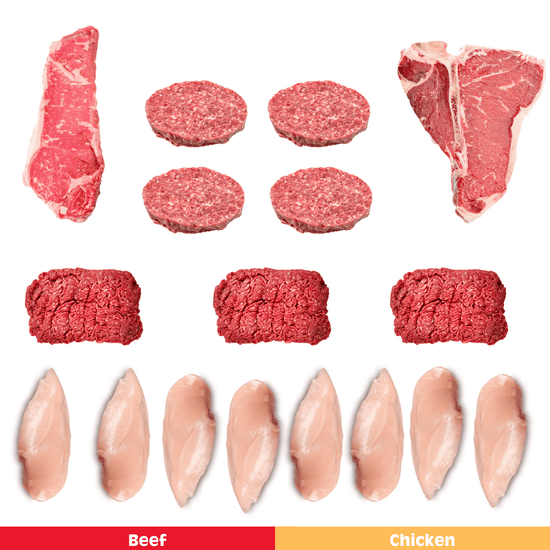In recent years, the term "regenerative farming" has gained popularity in discussions about sustainable agriculture and environmental conservation. But what exactly does it mean, and how does it effect the meat that you eat? We'll unravel the principles behind regenerative farming and explore how it offers a modern approach to cultivating the land and the future of ranching.
- Understanding the Basics:
Regenerative farming is an agricultural approach that goes beyond simply sustaining the land; it aims to actively improve soil health, biodiversity, and ecosystem resilience. Unlike conventional farming, which can often deplete soil nutrients and harm the environment, regenerative farming seeks to regenerate and restore the land for future generations.
- Soil Health as the Foundation:
At the core of regenerative farming is a focus on soil health. Healthy soil is teeming with life, including beneficial microbes, fungi, and other organisms that contribute to nutrient cycling and plant growth. Regenerative farmers prioritize practices that enhance soil fertility, structure, and moisture retention, such as cover cropping, minimal tillage, and composting.
- Biodiversity for Resilient Ecosystems:
Regenerative farming recognizes the importance of biodiversity in creating resilient agricultural ecosystems. Diverse plant and animal life contribute to a balanced ecosystem, helping control pests, improve pollination, and create a more stable and adaptive environment. Farmers may incorporate techniques like rotational grazing and planting diverse crop rotations to promote biodiversity on their farms.
- Carbon Sequestration and Climate Mitigation:
One of the key benefits of regenerative farming is its role in mitigating climate change. By building healthy soils, regenerative practices enhance carbon sequestration, drawing carbon dioxide from the atmosphere and storing it in the soil. This not only helps combat climate change but also improves soil structure and fertility.
- Farmer-Centric Approach:
Regenerative farming is not just about land practices; it also embraces a farmer-centric approach. By fostering a connection between farmers and their land, regenerative practices empower agricultural communities to make informed decisions that benefit both the farmer and neighbors around them.
Conclusion:
In the most simple terms, ranchers are using these practices to get more from the land while also benefiting the animals & environmental health. Many farmers are working toward regenerative farming to benefit not only themselves but the end product on your plate!









